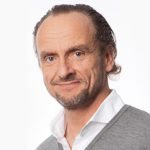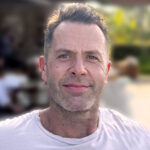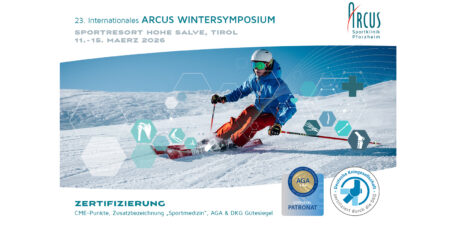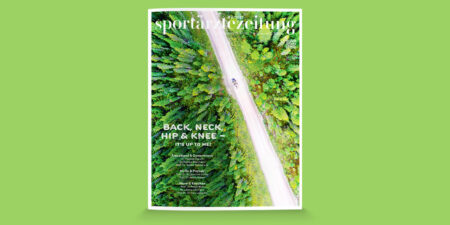Mit den Worten dieser Überschrift eröffnete Dr. Jesús Olmo sein Referat bei der diesjährigen Isokinetic-Conference in Lyon (www.isokineticconference.com/2022-edition/). Bei immer höher wachsendem Interesse an dieser speziellen Fachrichtung der Biologie und Medizin scheint er wohl Recht zu haben.
Könnte sie doch in Zukunft den Traum erfüllen, Gewebe des Körpers bei der Regeneration so zu unterstützen, dass dieses nach einer Verletzung tatsächlich den ursprünglichen Zustand wiedererlangt. Schon jetzt unterstützen und beschleunigen einige Blutderivate wie PRP oder Orthokine, die diese relativ junge Sparte der Medizin entwickelt hat, die Heilung nach Sportverletzungen. Dr. Jesús Olmo ist CEO des Football Science Institute in Granada, arbeitet in London für die Isokinetic Group und war von 2013 bis 2017 Direktor des medizinischen Dienstes von Real Madrid. Wir haben die Gelegenheit genutzt, diesem freundlichen und fachkundigen Kollegen einige Fragen zu stellen.
Dear Dr. Jesús Olmo, could you please tell us in which cases you prefer PRP and in which cases you use orthokine?
It is important to know that there is not enough scientific evidence that one blood product outperform the others. According to my clinical experience, I prefer PRP for Knee OA management and Orthokine both for small joints (AC, hands, spine…) OA and for ligament injuries, where I find an important analgesic effect. Anyway, I use both as coadjutants of the first line treatment, which is biomechanics correction through specialized exercise.
Do you have different experience between LR-PRP and LP-PRP? Which type of PRP is more efficient?
As said, it is not clear in the scientific literature if one is more efficient than the other. LR-PRP composition is richer in leukocytes and also platelets, inflammatory/catabolic factors such as the sCD40L and MMP-1, anabolic factors such as PDGF and TGF-β, and the anti-catabolic IL-1βRa, so potentially could have a more powerful effect and maybe a better role in improving acute injuries healing if applied on the first hours. But it also has more adverse effects (15 – 20 % in terms of swelling and pain), and even if LR-PRP has shown to work better in pathologies such as epicondylitis, recent evidence seems to deny any clinical difference, so I feel that we still need to find the right indications for both products.
Do you use some combinations of regenerative effective methods for example PRP and Hyaluronan acid?
I personally use the alternating combination of PRP and Hyaluronan for the management of the knee OA, as they have different effects: PRP elicit a biologic response, while hyaluronan is more related with a mechanical effect of cartilage protection. I´m finding good symptoms control with this combination and a prolongation of the time until a knee replacement is needed, but always if combined with biomechanics correction through specialized exercise as said before.
What are your experience with concentrated Bone marrow aspirate in comparison to vascular associated pluripotent stem cells from the adipose tissue?
I don’t have personal clinical experience with neither BMAC nor adipose-derived stem cells, as I use cultured bone marrow-derived stem cells, but it is important to highlight that any cell product must not be applied outside the proper legal framework (approved clinical trials or compassionate use in most countries) and there is no significant clinical evidence currently for the justification of the extra cost, morbidity and legal complexity of point-of-care procedures such as the BMAC, MFAT and SVF over blood products. On the other hand, cultured/expanded stem cells seem to offer a significantly higher potential effect on clinical outcomes, tissue healing and reversing of degenerative processes, with some game-changing results, so I think that – within a proper legal framework – bone marrow-derived mesenchymal stem cells can be the best option in top-level athletes, because there is an important difficulty and morbidity for fat tissue harvesting in lean, fit athletes, and also because their high cost is relative to the transcendency of many of these cases.
Biological repair of the musculoskeletal system is one of the main purposes in orthopedics and traumatology. Where do you see the future? Which type of regenerative methods will be the most important in the subject of sportsmedicine?
Regenerative medicine ultimate goals in sportsmedicine are two: Accelerating / Enhancing Acute Injury Healing and Slowing down / Reversing Chronic Pathology. So far, blood products are not clear to achieve these objectives, but provide a very useful clinical relief at mid-term, most in mild/moderate degenerative process. I think that cultured stem cells have the potential to achieve this goals, but we need to find methods that are more simple and practical, affordable, and better defined in terms of dosage, indications and timing. And of course, as associated therapy for the first-line treatment: control of the mechanical etiology of the injuries through biomechanics reconditioning.
PRP Definition Dr. Jesús Olmo „Any blood product with increased platelet (>blood x 2) concentration“
Autoren
ist Facharzt für Orthopädie und Inhaber einer orthopädischen Praxis mit Schwerpunkt Sport-Orthopädie in Münster. Außerdem ist er Vereinsarzt des SC Preußen Münster, Mannschaftsarzt der U16 DFB-Nationalmannschaft und wiss. Beirat der sportärztezeitung.
ist Diplom-Sportwissenschaftler mit Professional Master’s Degree in Sports Medicine sowie postgradualen Weiterbildungen in Mind-Body-Medizin (Harvard Medical School), Psychoneuroimmunologie und Lifestyle Medicine (American College of Lifestyle Medicine); Verleger der sportärztezeitung.
is a certified sports scientist with a professional master's degree in sports medicine and postgraduate training in mind-body medicine (Harvard Medical School), psychoneuroimmunology, and lifestyle medicine (American College of Lifestyle Medicine); publisher of the sportärztezeitung.
ist CEO des Football Science Institute in Granada, arbeitet in London für die Isokinetic Group und war von 2013 bis 2017 Direktor des medizinischen Dienstes von Real Madrid.






